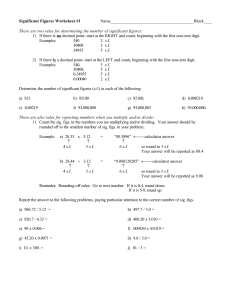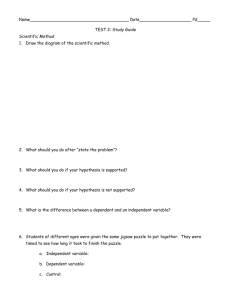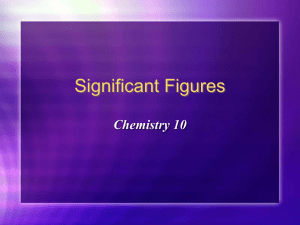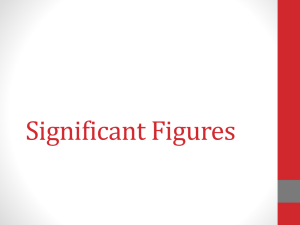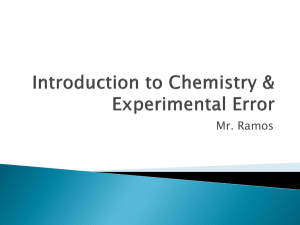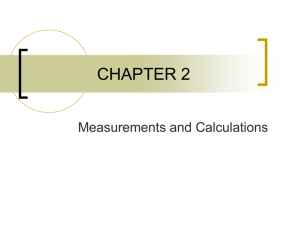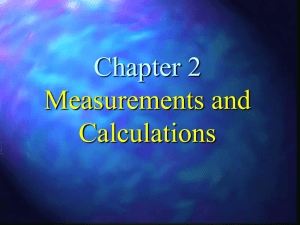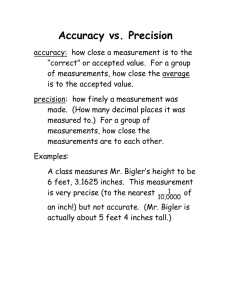Significant Figures in Measured Numbers
advertisement
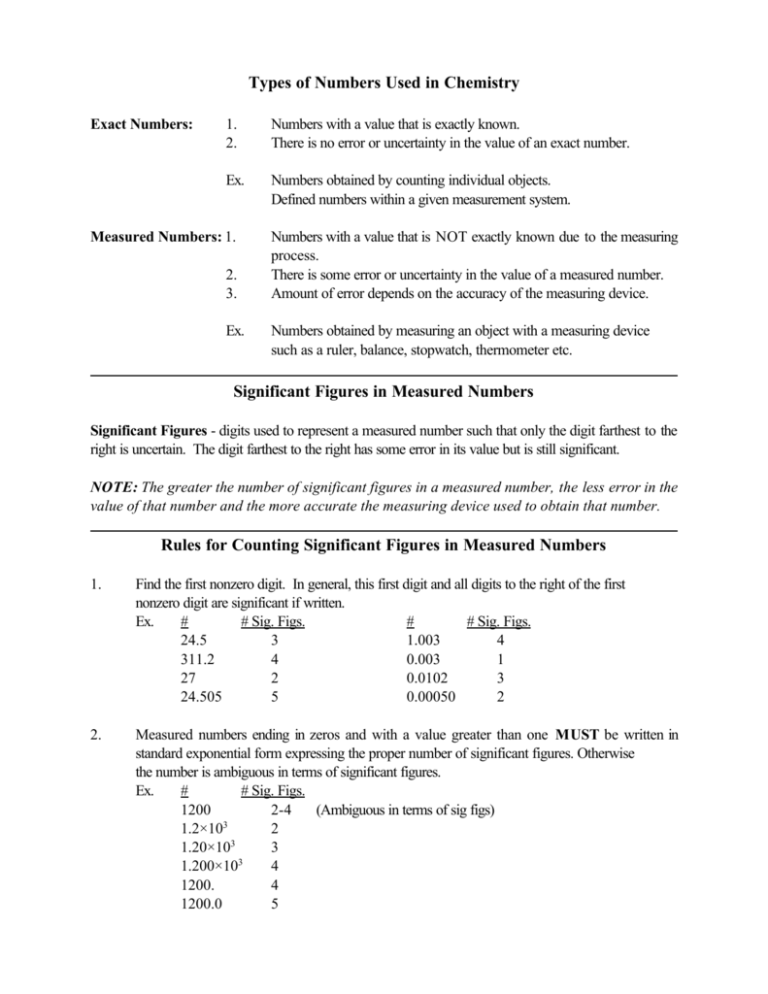
Types of Numbers Used in Chemistry Exact Numbers: 1. 2. Numbers with a value that is exactly known. There is no error or uncertainty in the value of an exact number. Ex. Numbers obtained by counting individual objects. Defined numbers within a given measurement system. Measured Numbers: 1. 2. 3. Ex. Numbers with a value that is NOT exactly known due to the measuring process. There is some error or uncertainty in the value of a measured number. Amount of error depends on the accuracy of the measuring device. Numbers obtained by measuring an object with a measuring device such as a ruler, balance, stopwatch, thermometer etc. Significant Figures in Measured Numbers Significant Figures - digits used to represent a measured number such that only the digit farthest to the right is uncertain. The digit farthest to the right has some error in its value but is still significant. NOTE: The greater the number of significant figures in a measured number, the less error in the value of that number and the more accurate the measuring device used to obtain that number. Rules for Counting Significant Figures in Measured Numbers 1. Find the first nonzero digit. In general, this first digit and all digits to the right of the first nonzero digit are significant if written. Ex. # # Sig. Figs. # # Sig. Figs. 24.5 3 1.003 4 311.2 4 0.003 1 27 2 0.0102 3 24.505 5 0.00050 2 2. Measured numbers ending in zeros and with a value greater than one MUST be written in standard exponential form expressing the proper number of significant figures. Otherwise the number is ambiguous in terms of significant figures. Ex. # # Sig. Figs. 1200 2-4 (Ambiguous in terms of sig figs) 3 1.2×10 2 1.20×103 3 3 1.200×10 4 1200. 4 1200.0 5

